(PAT)We are a competitive rates provider across the globe. We provide FCL (Full Container Loaded) and LCL (Less than Container Loaded) services to/from all ports worldwide.

FCL (Full Containers Loaded)
We are a professional freight forwarder who constantly associating with all major carriers. Therefore, we can provide you a service for all kinds of regular shipments and also fulfill clients’ specific requirements.
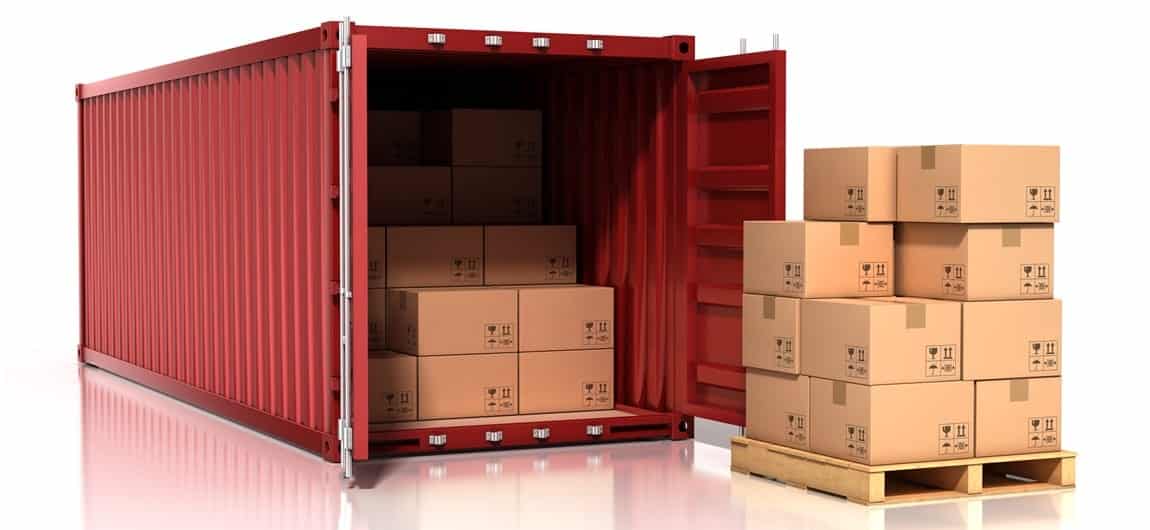
LCL (Less than container loaded)
We are extraordinarily experienced on moving LCL cargo to many countries worldwide, especially Asia. We have our re-packing centre as well as loading yard located in Bangkok.
Introduction of main ports in Thailand
According to the economic data of sea freight transportation in the seaport area in 2020 was found that,The number of vessels that transported goods from 22 checkpoints, totaling 139,088 ships, 293.852 million tons of product quantity, can be classified as foreign ship and coastal ship as follows:
1. Foreign vessel
– The largest number of inbound and outbound ship, classified by the size of the Tonnage range, including Ranong port.
– The highest volume of imported and exported goods is Laem Chabang port. The product category are petroleum
products, miscellaneous goods and do not specify the type of product.
2. Coastal vessel
– The largest number of inbound and outbound ship, classified by the size of the Tonnage range, including Laem
Chabang port.
– The highest volume of imported goods is Samut Prakan port and exported goods is Laem Chabang port. The product
category are petroleum products, miscellaneous goods and other agricultural products.
There are 6 main ports in Thailand that are managed by the Port Authority of Thailand (PAT), and another one that are managed by Chaophaya Terminal International CO.,LTD.
1.Bangkok Port (PAT)
Bangkok Port is located along the Chao Phraya River, which is in the area of Khlong Toei District. Bangkok port is a center for distribution products and reach more than 10 million consumers, supporting the transportation of goods from Laem Chabang and destinations across the country through various modes of transport, including road, rail and sea, it is connected to the logistics network of Thailand and international trade in Asia with direct call services with a full range of container services, supports cargo ships and coastal vessel with international service standards.
Bangkok port has a total area of 2,353 rai (3,764,800 square meters), with a depth of 8.2 meters, capable of serving vessels up to 12,000 dwt. Bangkok Port has a storage area 147,600 square meters of inbound containers, ready to serve container berths, coastal berths, general cargo terminal, tourist ship berths and container terminal.
Products operation area are consist of western and eastern dam area.
1.The western dam area, totaling 567.2 rai (907,200 square meters), is an area for general container service, international and domestic berths, including 7 cargo berths, 2 coastal and barge berths, 1 tourist berth.
2.The eastern dam area, totaling 331 rai (529,600 square meters), is an area for containers, container berths, including labor-saving equipment, including 7 berths and 1 coastal berth.
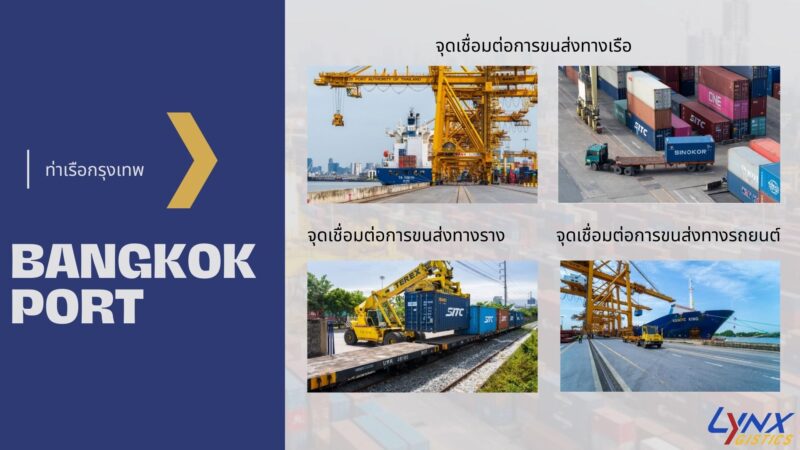
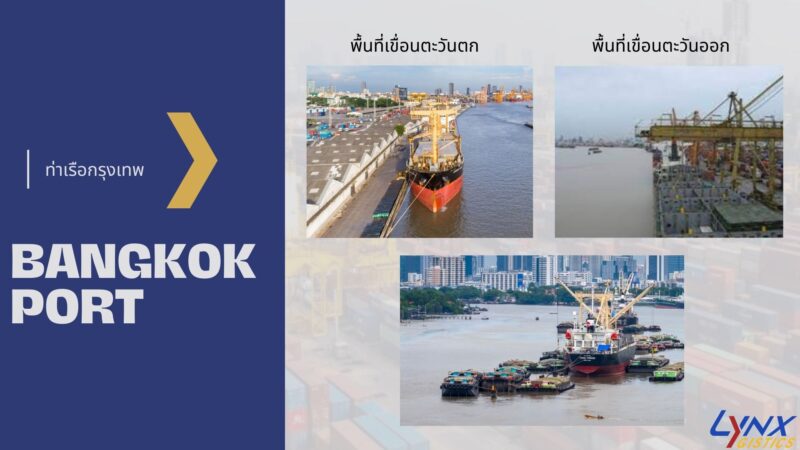
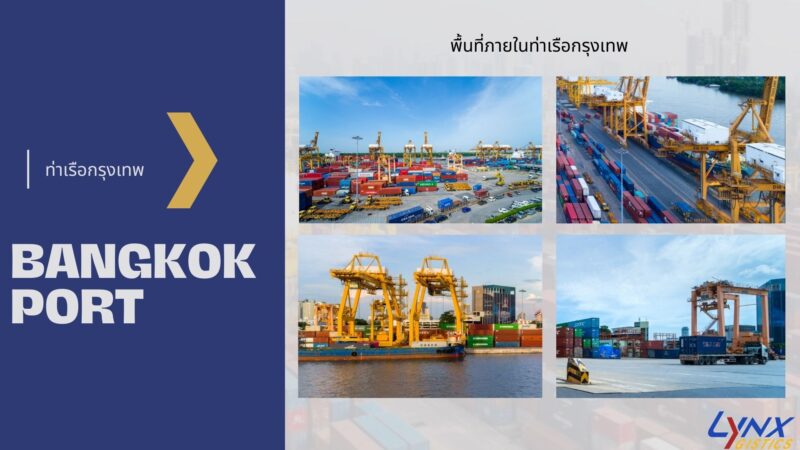
2.Laem Chabang Port
Laem Chabang Port is the main deep sea port of Thailand, also as the largest trading port in Thailand, is ranked 22nd in the world with the capacity to support total containers of 11.1 million TEU per year. It is also the center for supply chain connection to various industrial factories in the eastern part of Thailand. Laem Chabang Port has been operating by the Global Terminal Operators (GTOs), and able to accommodate various cargo ships that includes an ultra-large cargo ship (Super Post Panamax) with distribution capabilities into Bangkok and destinations throughout the country and through various modes of transportation such as roads, rails and sea, as well as providing space rental services for logistics and other businesses.
Laem Chabang Port has a total port area of 6,341 rai (10,145,600 square meters) including,
– The 1st mooring basin including coastal and multipurpose berths (A0), passenger and Ro-Ro berths (A1), multipurpose berths (A2,A3), bulk general cargo berths (A4), Ro-Ro berth (A5), container berth (B1-B5).
– The second mooring basin consists of a berth (C0) and container berth (C1-C3, D1-D3).
Laem Chabang Port Project Phase 1
There are 6 berths in the north, namely A0, A1, A2, A3, A4, A5 berths and shipyards and ship repairs.
1. A0 berth is a coastal and multipurpose berth. The length of the port is 590 meters. It can accommodate general cargo transported by barge, coastal ship and general cargo ships.
2.A1 berth is a passenger berth and Ro/Ro ship. The length of the port is 365 meters, serving international passengers, loading and unloading goods from Ro/Ro ships, including the ability to transport goods such as cars and able to accommodate passenger ships of 70,000 dwt.
3.A2 berth is a multipurpose berth. The length of the port is 400 meters, providing transportation of goods and containers, and able to accommodate ships of 50,000 dwt.
4. A3 berth is a multipurpose berth. The length of the port is 350 meters.
5. A4 berth is a general cargo berth. The length of the port is 350 meters, providing transportation of sugar and molasses, and able to accommodate general cargo ships up to 40,000 dwt.
6. A5 berth is a Ro/Ro berth to accommodate exported cars and general cargo ships. The length of the port 450 meters, and able to accommodate general products of 70,000 dwt.
7. Shipyard and ship repair is Located at the northern of Terminal A. It has 2 floating docks capable of repairing 140,000 dwt and 50,000 dwt, and a dry dock with repair facilities for smaller boats not less than 13,000 GT.
There are 5 southern berths, namely B1, B2, B3, B4 and B5 berths.
– B1, B2, B3, B4 berths with a length of 300 meters, providing container transportation services, and has the ability to receive a container of 50,000 dwt.
– B5 berth has a length of 400 meters, providing container transportation services, and has the ability to accept containers of 120,000 dwt.
A1, A2, A3 ,A4 , A5, B1, B2, B3, B4 and B5 berths have a depth of -14 meters from the sea level.
Laem Chabang Port Project Phase 2
It includes 4 berths, namely C0, C1 and C2, C3, D1-D3.
1. C0 berth is a typical Ro/Ro berth. and container ship not more than 50 TEU per trip. Laem Chabang Company International Road Terminal Co., Ltd. is a tenant invertor.
2. C1 and C2 berth have a length of 700 meters and 500 meters, respectively, with a depth of 16 meters from medium sea level.
3.C3 berth has a length of 500 meters and a depth of 15 meters from medium sea level, providing cargo transportation service. C3 berth can support container ships with a capacity of 80,000 dwt. Laem Chabang Company International Terminal Co., Ltd. is a tenant investor.
4. D1-D3 berth has a length of 1,700 meters.
The C1 and C2, D1-D3 berths are owned by Hitchison Laem Chabang Terminal Company Limited as a tenant.
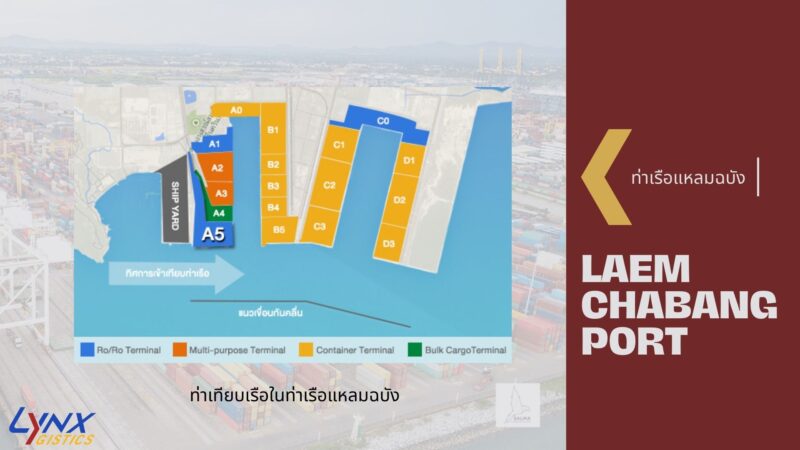

3.Chiang Saen Commercial Port
Chiang Saen Commercial Port is located on the right side of Sabok estuary, Chiangrai province, also as the gateway of trade between Thailand and the countries in the upper Mekong Basin, including Southern China, Republic of the Union of Myanmar and Lao People’s Democratic Republic. Chiang Saen commercial port is ready to support cross-border cargo transportation with the potential to support general cargo ships and fuel tankers. It is also convenient to export car. The main exported products are frozen meat, which has 40,000 – 50,000 tons per year, along with sugar with an estimated export of 30,000 – 40,000 tons per year.
Facilities in Chiang Saen Commercial Port
– 2 berths with ramps for loading and unloading general cargo, length 300 meters.
– Vertical berth for loading and unloading general cargo and containers, 200 meters long and 50 meters long, 1
berth.
– 1 berth for fuel oil transfer, 150 meters long, and can accommodate 50 meters long ship, also can transfer fuel
with 2 ships at the same time.
– Container yard of 20,000 square meters.
– Parking for 100 trucks, mooring basins and 2 warehouses.
– Area for oil loading and unloading activities size 32,000 square meters and general cargo area 9,600 square
meters, 2 points.
– 70 plugs for temperature controlled containers with lighting system facility for loading and unloading at night.
– 2 forklift trucks and 1 mobile crane.
– There is a one stop service, including the Chiang Saen Commercial Port Office, Marine Office, Chiang Saen Customs house, Chiang Saen food and drug administration, international communicable disease control, immigration checkpoint, Chiang Rai animal quarantine station and Fish Quarantine and Inspection Regional Center 1
Transport network
– Water transport : support transportation routes from Guan Lei Port, People’s Republic of China, Republic of the Union of Myanmar and the Lao People’s Democratic Republic.
– Road transport :
1. Rural Road No. 1290, Mae Sai District – Chiang Saen District – Chiang Khong District.
2. Rural Road Chor Ror 1063, Chiang Rai District – Chiang Saen District.
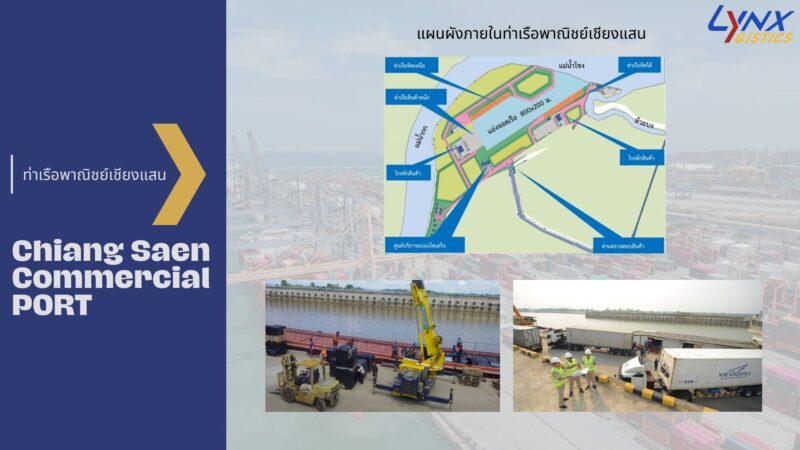
4.Chiang Khong Port
Chiang Khong Port is located in Chiang khong district, Chaingrai province, is a shipping port in the Mekong Basin. The border area of Thailand with Bokaeo and Luang Prabang Province of Lao People’s Democratic Republic.
Facilities in Chiang Khong Port
– There is a berth with a length of 180 meters, a width of 24 meters, capable of mooring ship 80 – 150 tons and can accommodate 5-10 trucks in the yard.
– Installed plugs for temperature controlled cargo containers with 5 plugs.
– There are related organization to provide one stop service, namely the Customs Department, Excise Department, Marine department, Immigration checkpoint, Public health checkpoint, Animal and Plant Quarantine station.
– Open 24 hours and can accommodate small cargo ships.
Transport network
– Water transport : opposite Huai Sai town, Bo Kaeo sub-distract, Lao PDR.
– Land transport : the road connecting Chiang Saen District – Chiang Khong.
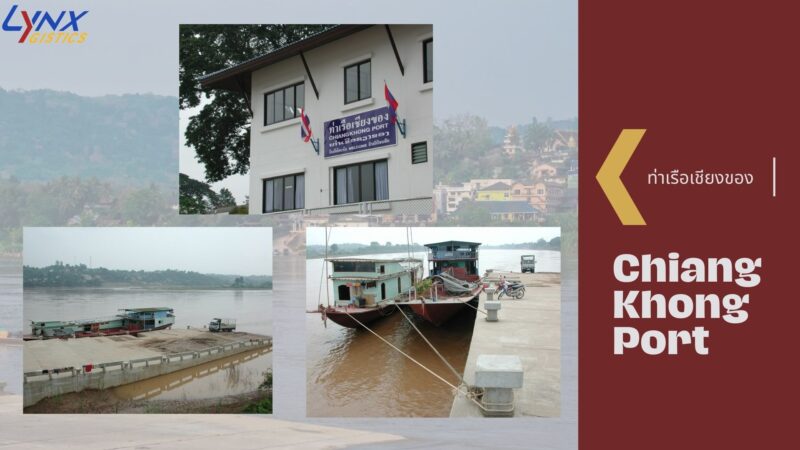
5.Ranong port
Ranong port is located on the eastern side of Kraburi river, Ranong province. Ranong port has an area of 193 rai (308,800 square meters), also as a commercial gateway that can support the transportation of goods on the Andaman coast. It is linked to trade in BIMSTEC countries, South Asia, Middle East, Europe and Africa. Ranong port has an international standard service system and supports all types of cargo transportation with container berths and multi-purpose berths, also as a base to support various materials in exploration and drilling projects, natural gas and oil in the Gulf of Martaban.
Facilities in Ranong Port
– Ranong Port provides loading, unloading, moving, storage, and delivery services.
– There is a one stop service where users can pay for customs clearance, immigration formalities.
– Ranong port comes with a multipurpose berth, 26 meters wide, 134 meters long and a container berth 30
meters wide and 150 meters long, capable of serving cargo ships up to 12,000 dwt.
– Warehouse size 1,500 square meters.
– General warehouse of 7,200 square meters and container yard of 11,000 square meters
Transportation
– By road, take highway No. 4, Phetkasem, Bangkok – Chumphon – Ranong (568 kilometers), turn right onto
Road No. 4010 at the waterfall area (13 kilometers), arrive to Ranong Port.
– By rail, transport from all regions to Chumphon, until arrive to Ranong Port (110 kilometers).
– By water, transport by water from the Gulf of Thailand to Ranong Port at Prachuap Khiri Khan Province and
Surat Thani Province ,then transport to Ranong port.
– By air, there is a commercial airport and regular flights connecting Ranong – Bangkok.
Ranong Port plays an important role in the shipping industry with a full range of container services since the
warehouse, customs clearance service, immigration and service of renting the business area.
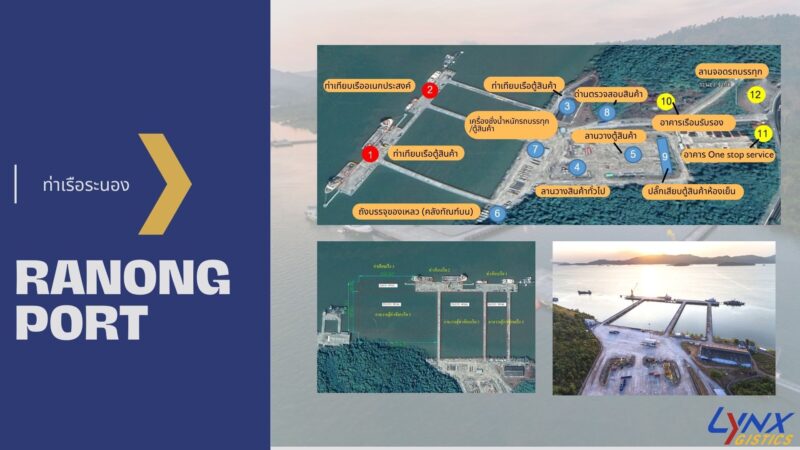
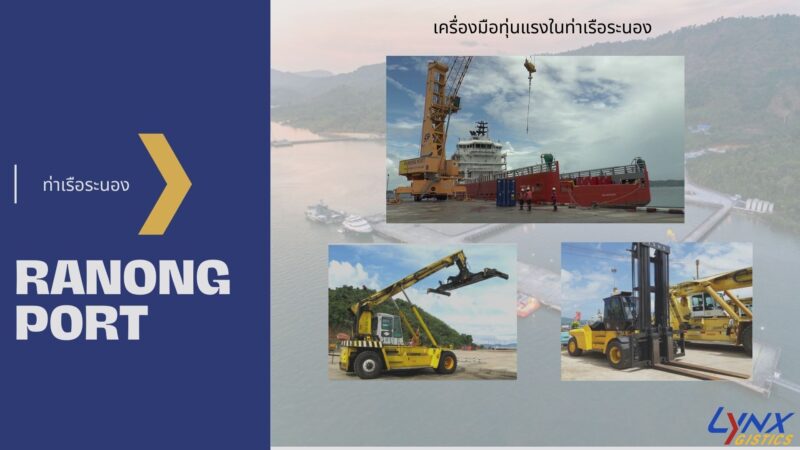
6.Songkhla Port
Songkhla Port is the main vessel in the southern coast of the Gulf of Thailand. It is located at Hua Khao Subdistrict, Singhanakhon District, Songkhla Province. The purpose of the construction is transport goods from the south to foreign countries, especially the main product is rubber, and for transportation goods imported for use in the south, stimulate the growth of trade and industry in the south.
Songkhla Port has a total area of 72 rai, consists of land area of 12 rai and reclamation area of 60 rai, comprising a berth with a total length of 510 meters, divided into 3 ports, capable of accepting 3 vessels up to 173 meters in length at the same time. The details are as follows:
– Terminal 1–2 are general cargo terminals, able to receive 600,000 tons of products per year.
– Terminal 3 is a container terminal, can receive 160,000 TEU containers per year.
In addition, there are other facilities such as a container yard of 50,000 square meters and a warehouse of 6,720 square meters. The equipment used for loading and unloading products including forklifts and trucks. The port does not have a crane in front of the port. Therefore, to lift the cargo from the ship must use a marine deck crane.
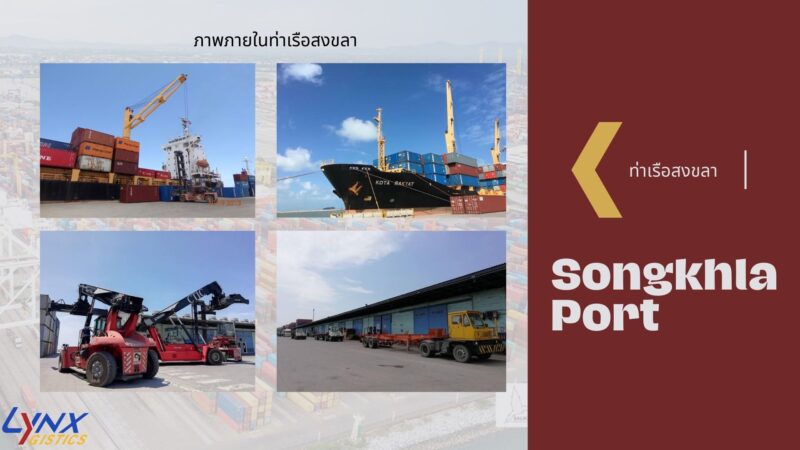
What is the difference between VOCC & NVOCC
Sea freight carriers are divided into 2 groups : VOCC & NVOCC
1. VOCC (Vessel Operating Common Carrier) A group of carriers that have their own cargo ships which is a shipping line.
2. NVOCC (Non-Vessel Operating Common Carrier) A group of carriers that don’t have their own cargo ships, but can provide sea freight services for the movement of cargo.

The differences between Feeder vessel and Mother vessel
When transport goods by vessel, there are network service of maritime routes and feeder vessel & mother vessel are also part of maritime network service.
1.Feeder vessel is normally small in size compared to Mother vessel which receives cargoes from mother vessel to smaller ports and receives cargoes from smaller ports to mother vessel.
2.Mother vessel is big in size compared to feeder vessel, which calls only serve between main ports.
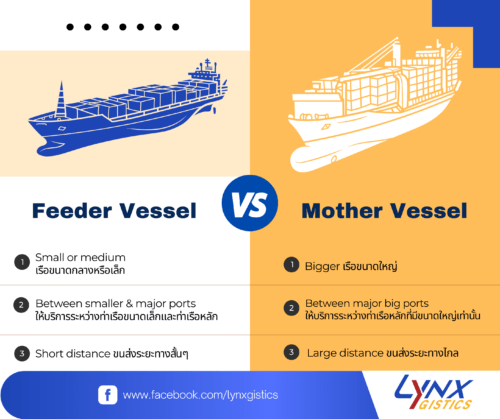
Bills of Lading (B/L)
Bills of Lading (B/L) is an important document in ocean freight. It is a document issued by the shipping company to the shipper as evidence that the carrier has received the goods for loading onto the ship. when the goods arrive at the destination the consignee will bring the bills of lading (B/L) to the carrier to receive the delivery order (D/O) document, and then bring the delivery order to customs to clear the goods from the port
There are 3 types of B/L
1. ORIGINAL B/L
2. SURRENDER B/L or Telex release
2. SEA WAYBILL
ORIGINAL B/L
Original B/L consist of 3 sets. The consignee must use original document only to exchange D/O at destination with carrier’s agent. Copies cannot be used.
SURRENDERED B/L
Shipper submit Original B/L 3sets to carrier’s agent at port of loading to arrange surrender B/L. The agent at origin port then will submit telex release in the system. With surrender B/L, Consignee can exchange D/O with carrier’s agent at destination by using copy of B/L.
SEA WAYBILL
With sea waybill, Consignee can exchange D/O with carrier’s agent at destination without original B/L. It is more convenient and faster to use Sea waybill, but shipper is at risk of collecting money from consignee. Sea waybill is suitable for shipper and consignee who have been traded for a long time and trust each other.
advantages and disadvantages of 3 types B/L
| Type of B/L | Advantages | Disadvantages |
| Original B/L | · Gives control over the movement and delivery of goods. The shipper can maintain control of the shipment and can transfer its right to possession at the time of its choosing· Useful in shipments under a letter of credit as it controls the transfer of goods and funds | · Due to timing and the need to wait for the properly endorsed original to arrive, the necessary transfer of documents can sometimes delay consignee in gaining possession of the cargo
|
| Surrendered B/L |
| · There is an additional fee that the carrier will charge the shipper. |
| Sea waybill |
|
|
